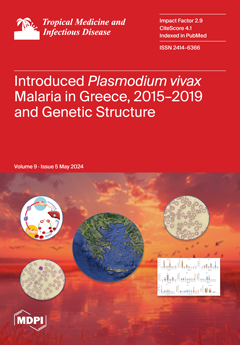Dendritic cells (DC) along with macrophages are the main host cells of the intracellular parasite
Leishmania. DC traverse a process of maturation, passing through an immature state with phagocytic ability to a mature one where they can modulate the immune response through
[...] Read more.
Dendritic cells (DC) along with macrophages are the main host cells of the intracellular parasite
Leishmania. DC traverse a process of maturation, passing through an immature state with phagocytic ability to a mature one where they can modulate the immune response through the secretion of cytokines. Several studies have demonstrated that
Leishmania inhibits DC maturation. Nevertheless, when cells are subjected to a second stimulus such as LPS/IFN-γ, they manage to mature. In the maturation process of DC, several signaling pathways have been implicated, importantly MAPK. On the other hand, Akt is a signaling pathway deeply involved in cell survival. Some
Leishmania species have shown to activate MAPK and Akt in different cells. The aim of this work was to investigate the role of ERK and Akt in the maturation of monocyte-derived DC (moDC) infected with
L. mexicana. moDC were infected with
L. mexicana metacyclic promastigotes, and the phosphorylation of ERK and Akt, the expression of MHCII and CD86 and IL-12 transcript, and secretion were determined in the presence or absence of an Akt inhibitor. We showed that
L. mexicana induces a sustained Akt and ERK phosphorylation, while the Akt inhibitor inhibits it. Moreover, the infection of moDC downregulates CD86 expression but not MHCII, and the Akt inhibitor reestablishes CD86 expression and 12p40 production. Thus,
L. mexicana can modulate DC maturation though Akt signaling.
Full article






